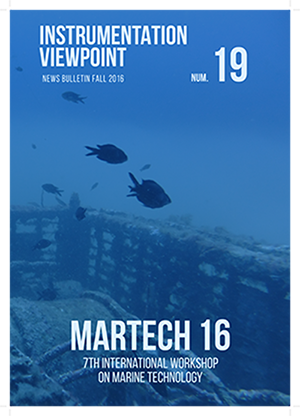Architecting the cyberinfrastructure for National Science Foundation Ocean Observatories Initiative (OOI)
Resumen
The NSF Ocean Observatories Initiative (OOI) is a networked ocean research observatory with arrays of instrumented water column moorings and buoys, profilers, gliders and autonomous underwater vehicles (AUV) within different open ocean and coastal regions. OOI infrastructure also includes a cabled array of instrumented seafloor platforms and water column moorings on the Juan de Fuca tectonic plate. This networked system of instruments, moored and mobile platforms, and arrays will provide ocean scientists, educators and the public the means to collect sustained, time-series data sets that will enable examination of complex, interlinked physical, chemical, biological, and geological processes operating throughout the coastal regions and open ocean. The seven arrays built and deployed during construction support the core set of OOI multidisciplinary scientific instruments that are integrated into a networked software system that will process, distribute, and store all acquired data. The OOI has been built with an expectation of operation for 25 years.Descargas
Número
Sección
Licencia
Universitat Politècnica de Catalunya has joined the Berlin Declaration on Open Access to Knowledge in the Sciences and Humanities. This declaration proposes the universal acces to the results of scientific and technical research.
All papers presented at Martech will be published in both the UPCommons and the Martech organization web sites, the former being the institutional digital deposit of Universitat Politècnica de Catalunya (https://upcommons.upc.edu). This difussion will be made through the Creative Commons License Attribution-NonCommercial-NoDerivs 2.5 or similar (http://creativecommons.org/licenses/by-nc-nd/2.5/deed.en).
When sending the final paper, the author must agree to the conference having non-exclusive rights on this operation. The author will maintain his/her right to diffuse the paper elsewhere.







